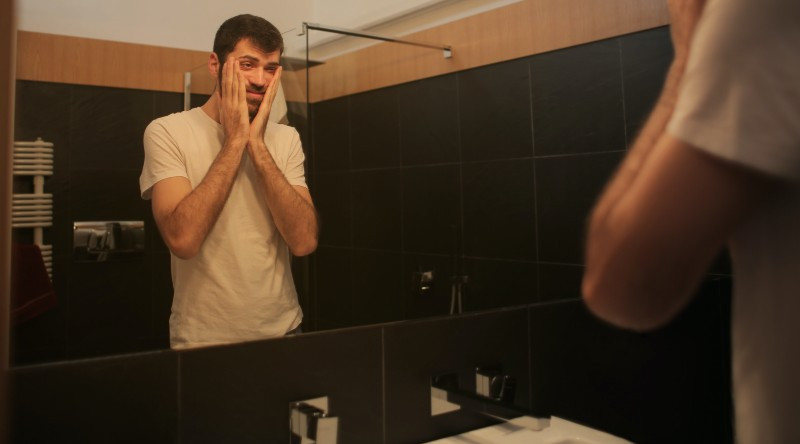Are you feeling under the weather with an ear infection? Don’t let that stop you from hitting the gym and lifting some weights! While it may seem counterintuitive, weightlifting can actually be a great way to boost your immune system and help you feel better faster. Plus, who wants to miss out on that satisfying post-workout endorphin rush? In this article, we’ll provide some tips for safely lifting weights with an ear infection. So grab your dumbbells and let’s get started!
The Benefits of Weightlifting with an Ear Infection
It is important to note that weight training can be beneficial for anyone, regardless of whether or not they have an ear infection. The benefits of weight training for individuals with an ear infection are likely to be the same as the benefits for individuals without an ear infection. These benefits may include:
- Improved immune function
- Reduced stress and anxiety
- Increased muscle strength and endurance
- Better sleep
- Improved cardiovascular health
- Increased bone density
- Enhanced mood and overall sense of well-being.
Why would you want to allow a pesky ear infection to prevent you from benefitting from all of that?!
Specifically with regard to the immune system, resistance training, also known as weight training or strength training, can help to improve immune system function in several ways.
Regular resistance training can increase the production of immune cells, such as white blood cells, which are essential for fighting off infections and diseases. Resistance training can also increase the circulation of immune cells throughout the body, which can help to more effectively target and eliminate potential threats.
Additionally, resistance training has been shown to reduce stress and anxiety, which can further boost the immune system by lowering levels of the stress hormone cortisol. Overall, regular resistance training can help to improve immune function and promote overall health and wellbeing.
Consulting with a Doctor Before Starting a Workout Routine
That all sounds amazing doesn’t it? But you should never leave an ear infection untreated.
An untreated ear infection can lead to several serious complications. These complications may include:
- Mastoiditis: This is an infection of the mastoid bone, which is located behind the ear. Mastoiditis can cause severe pain, swelling, and redness in the ear and can lead to hearing loss if left untreated.
- Labyrinthitis: This is an infection of the inner ear, which can cause dizziness, vertigo, and hearing loss.
- Meningitis: This is an infection of the membranes that surround the brain and spinal cord. Meningitis can be life-threatening and can cause severe headaches, fever, and confusion.
- Brain abscess: This is a collection of infected pus that forms in the brain. A brain abscess can cause severe headaches, confusion, and seizures.
A minor ear infection can spiral into something much more serious. It is important therefore to seek medical treatment for an ear infection to avoid these and other potential complications. A doctor can prescribe antibiotics or other treatments to help clear the infection and prevent complications.
Modifying Your Workout for an Ear Infection
The main way you will need to modify your workout will be to reduce the intensity in order to avoid overtraining which will negate all the potential immune-bosting benefits of weight training that we looked at earlier.
Overtraining with weights can suppress the immune system in several ways. When the body is subjected to intense physical stress, such as heavy weightlifting, it releases a hormone called cortisol. Cortisol helps the body to respond to physical stress by providing a temporary boost in energy. However, high levels of cortisol over an extended period of time can have negative effects on the body, including suppression of the immune system.
In addition to the release of cortisol, overtraining with weights can also lead to a state of chronic inflammation in the body. This chronic inflammation can further suppress the immune system, making the body less able to fight off infections and diseases.
To avoid overtraining and the potential suppression of the immune system, it is important to balance intense weight training with adequate rest and recovery. This can help to maintain a healthy immune system and support overall health and wellbeing.
For this reason we recommend training no more than three days per week while you’re recovering from an ear infection and be sure to keep those three sessions to under 50 minutes in length.
Tips for Safely Lifting Weights with an Ear Infection
Here are 7 tips to help you stay safe while lifting weights with an ear infection:
- Consult with a doctor before starting or continuing a weight training routine, especially if you have an ear infection. Your doctor can provide personalized advice and guidance on how to safely incorporate weight training into your fitness routine.
- Start slowly and gradually increase the intensity and variety of your workouts. This can help to prevent overtraining and avoid putting too much stress on your body.
- Pay attention to proper form and technique to avoid injury. Use a mirror or ask a trainer or workout partner to check your form to ensure that you are performing exercises correctly.
- Avoid exercises that put pressure on the ears, such as exercises that involve lying on your stomach or using a chin-up bar.
- Use light to moderate weights and perform a higher number of repetitions to avoid overloading the muscles.
- Take frequent breaks and listen to your body. If you start to feel pain or discomfort, stop the exercise and rest.
- Incorporate other forms of low-impact exercise, such as walking or swimming, into your fitness routine to provide variety and prevent overtraining.
When suffering from an ear infection, it’s common to experience frequent dizziness. For this reason you may want select exercises that don’t require too much balance.
Some examples of these exercises include:
- Seated dumbbell press: This exercise can be performed while seated on a bench or chair, with the weights held at shoulder level. The weights can then be pressed upward, working the shoulders and upper body.
- Dumbbell rows: This exercise can also be performed on a bench, with the bench serving as a support on which to place your hand and knee to form a solid base. The weights can then lifted form the floor and pulled back toward the chest, working the back and upper body.
- Bicep curls: This exercise can be performed seated on an incline bench, with the weights held at the sides of the body. The weights can then be curled upward toward the shoulders, working the biceps.
- Leg press: This exercise can be performed using a leg press machine, with the feet placed on the platform and the weights pushed upward. The leg press eliminates the need to balance in the way that is required during the traditional squat or lunge movement.
These exercises can be performed safely and effectively without requiring good balance, making them suitable for individuals with an ear infection. It is always important to consult with a doctor and pay attention to proper form and technique to avoid injury.
Weightlifting with an ear infection
I hope you’re reassured that you don’t need to let an ear infection be an excuse to skip the gym. Weightlifting can be a great way to boost your immune system, improve your mood, and get those endorphins flowing – just don’t overdo it. Plus, with these handy tips for safely lifting weights with an ear infection, you can hit the gym with confidence.
So grab your dumbbells, crank up your favorite workout playlist, and let’s get lifting! And remember, if anyone gives you a funny look while you’re at the gym, just tell them you’re “ear for the gains”. That was terrible, sorry!

